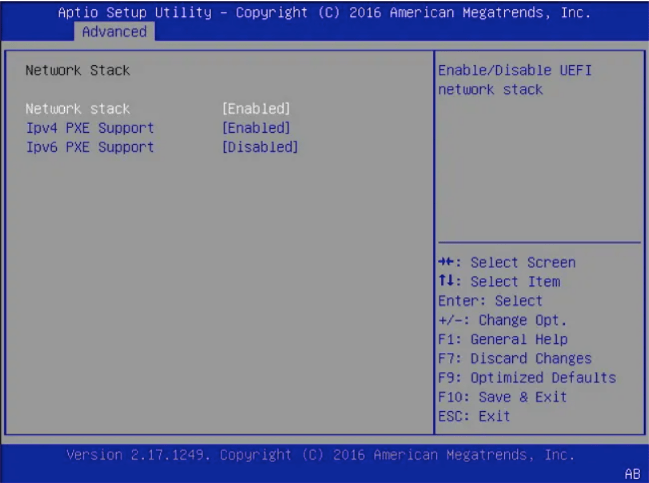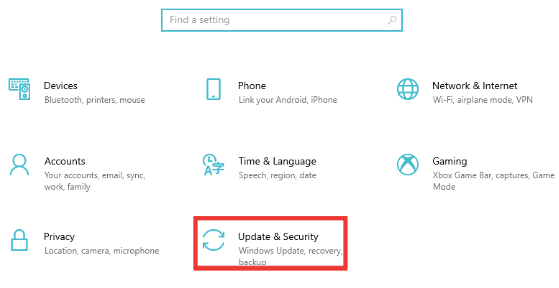Have you ever heard of Network Stack BIOS? If so, you may be wondering what it is and whether or not you should enable it. Well, we’re here to help if you want to Enable Network Stack in BIOS. In this blog post, we’ll provide a complete overview and explain why it’s important and how to enable it on your computer.

Using stack cables, a mechanism known as stacking joins various switches to create a logical switch for data forwarding. As a commonly utilized horizontal virtualization technique, it may increase bandwidth, expand the number of ports, and enhance networking efficiency.
What is Network Stack in BIOS?
Network Stack BIOS is a feature built into most computers that allow for multiple network protocols to operate simultaneously. The Advanced Configuration, as well as the Power Interface (ACPI) specification, was designed as a mechanism for better communication between the operating system and the hardware.
This feature enables multiple protocols, such as IPX/SPX, NetBEUI, TCP/IP, etc., to be used at the same time without conflict. In a nutshell, it can be updated to make sure that Android can adapt to changing network standards and support new implementations.
How Does Network Stack Work?
Network Stack works by assigning each protocol its own stack within memory. Each stack holds a copy of the protocol data structures and functions needed for communication over a network.
The stacks are then linked together so that communication between different protocols can occur without conflicts arising from overlapping addresses or other issues. As a result, data can be sent and received without any problems or delays due to conflicting information between different protocols.
What Are The Benefits Of Using Network Stacks?
1. The primary benefit to Enable Network Stack in BIOS is that they make network communication faster and more efficient by allowing multiple protocols to communicate simultaneously without conflicts or delays arising from overlapping address spaces or other issues.
2. Additionally, they allow for better scalability since new protocols can be added easily as needed without having to rewrite existing code or reconfigure existing hardware components.
3. Finally, they also improve system performance by reducing processor load when sending data across a network since there are fewer resources being used for managing communications between different protocols.
How Do You Enable Network Stack BIOS?
If you want to Enable Network Stack in BIOS, it is a relatively straightforward process, but it requires some technical knowledge in order to properly configure them correctly.
1. Opening the BIOS Settings
For Windows 10
1. Go to Windows Settings by clicking the Start button.
2. Click on Update & Security.

3. On the left side of the panel, select Recovery.
4. Select “Restart Now“, on the right side of the window, beneath Advanced Startup.
5. Select Troubleshoot once Windows has restarted.
6. To troubleshoot, click “Advanced Options“
7. Click BIOS or UEFI Firmware Settings after that.
8. Finally, select Restart.
For Windows 11
To Enable Network Stack in BIOS, you need to:
1. Go to Windows Settings by clicking the Start button.
2. On the left side of the panel, choose System.
3. Locate Recovery and click there.
4. On the Advanced Startup, click Restart.
5. Select Troubleshoot after your computer has restarted.
6. Opt for Troubleshoot.
7. Then select Advanced Options.
8. Select UEFI Firmware Settings after that.
9. Next, select Restart.
10. Your computer will boot into BIOS after restarting.
2. Enabling Network Stack BIOS
1. Open the BIOS Network Stack.
2. Look for Advanced Boot Options once you are in the BIOS.
3. Find the Network Stack menu item.
4. By selecting the Enable option, you may turn it on.
5. To save the modifications and leave BIOS, press F10 on the keyboard right away.
6. Finally, start the computer again.
Do You Need To Use Network Stacks?
In general, if you are using multiple networking protocols on your computer, then it is best practice to Enable Network Stack in BIOS in order for those protocols to work properly with one another without any conflicts arising from overlapping address spaces or other issues.
If you are only using one protocol, however, then it isn’t strictly necessary, but depending on your specific needs may still be beneficial depending on your particular circumstances.
Are There Any Drawbacks To Using Them?
The main drawback of using Network Stacks is that they do add some overhead which can have an impact on system performance if too many stacks are enabled at once, as this can increase processor load when sending data across a network compared with not having any stacks enabled at all.
Additionally, enabling too many stacks may also cause conflicts between different applications running on the same machine, which could lead to instability or even crashes, so proper testing should always be done before enabling them in production systems!
Conclusion:
No matter what type of computing needs you have – whether you’re using multiple networking protocols or just working with one – understanding how Network Stack BIOS works is essential if you want optimal performance from your system’s networking capabilities!
With this knowledge under your belt, now you know how easy it is to enable them to get the best potential out of your machine’s networking abilities while avoiding any potential drawbacks associated with doing so!
We hope this blog post has given you some insight into why enabling Network Stacks can be beneficial and how easy it really is! Happy computing!





